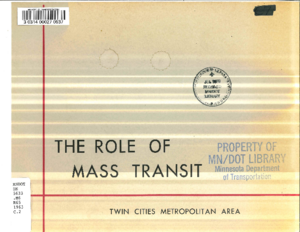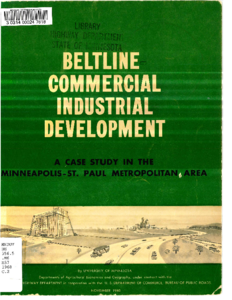The Role of Mass Transit: Twin Cities metropolitan area
Date Created
1963-03
Description
Traffic Study, Minneapolis Central Business District
Creator
Date Created
1946
Description










